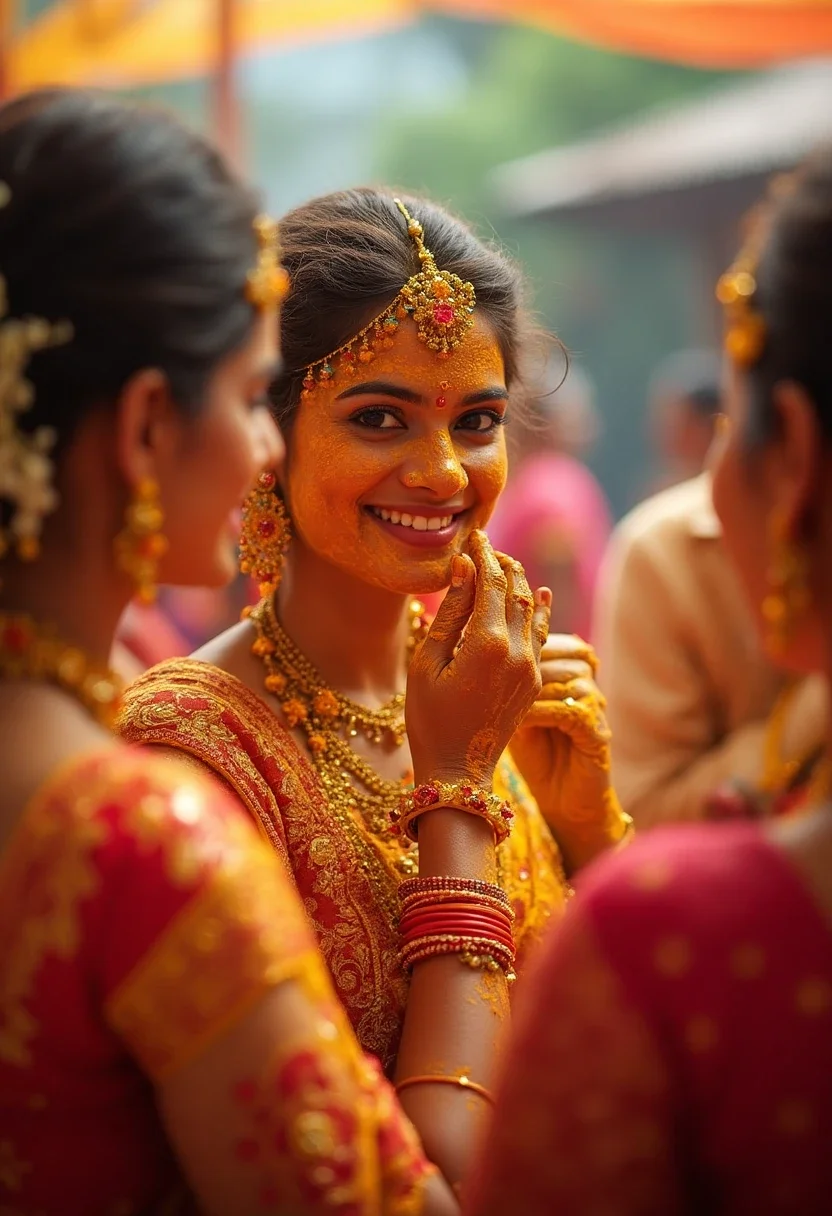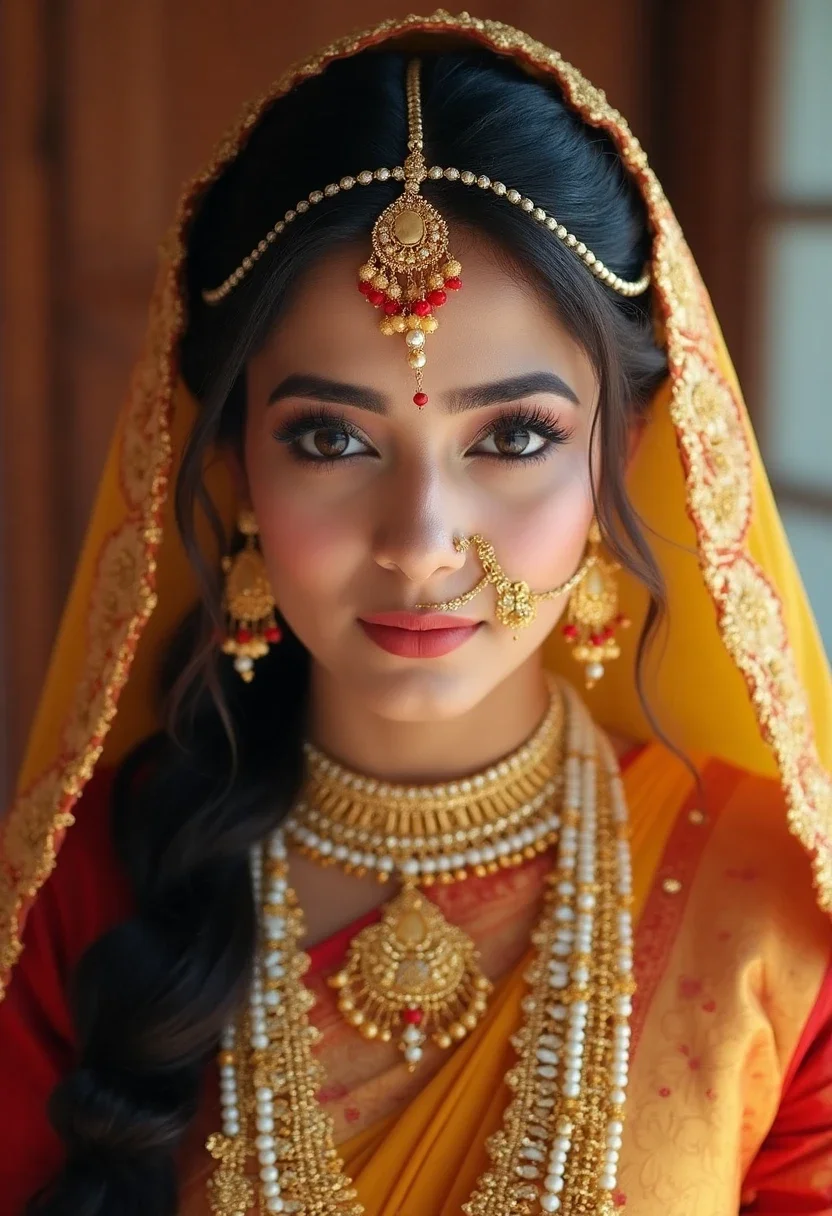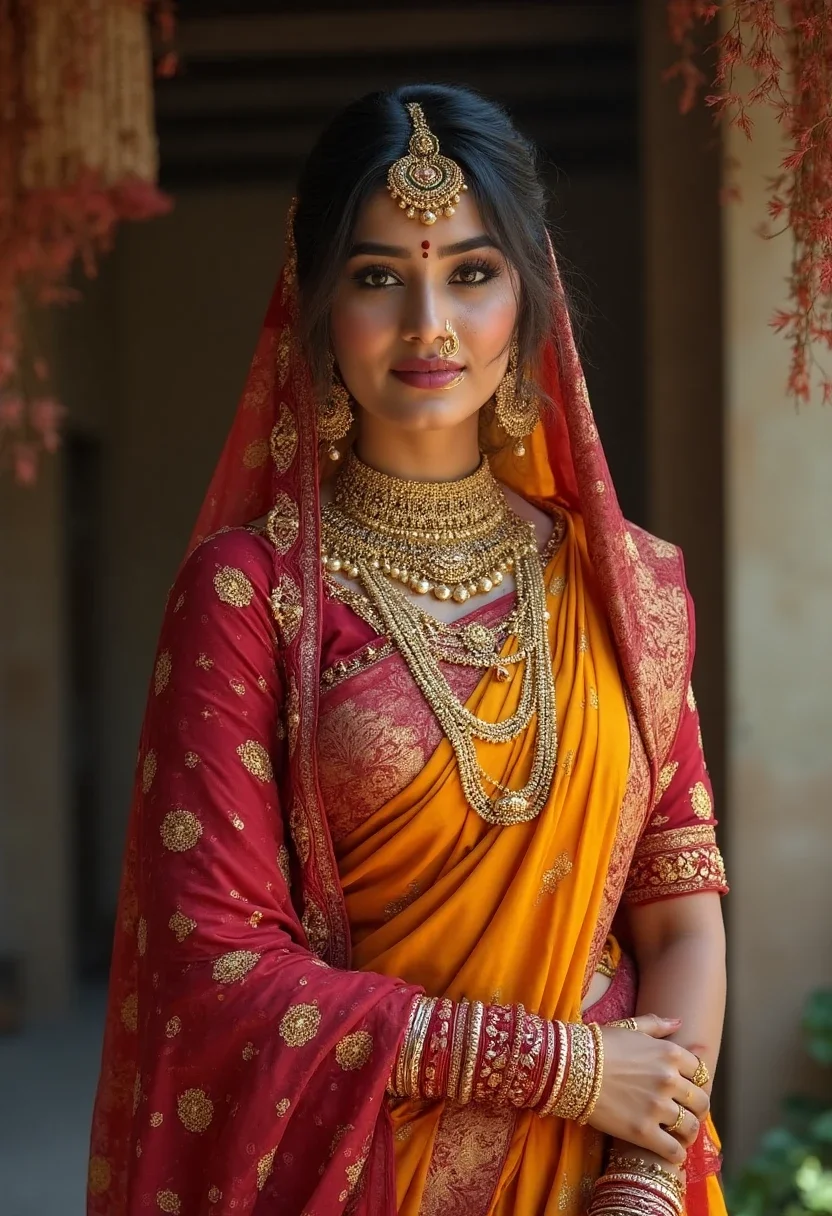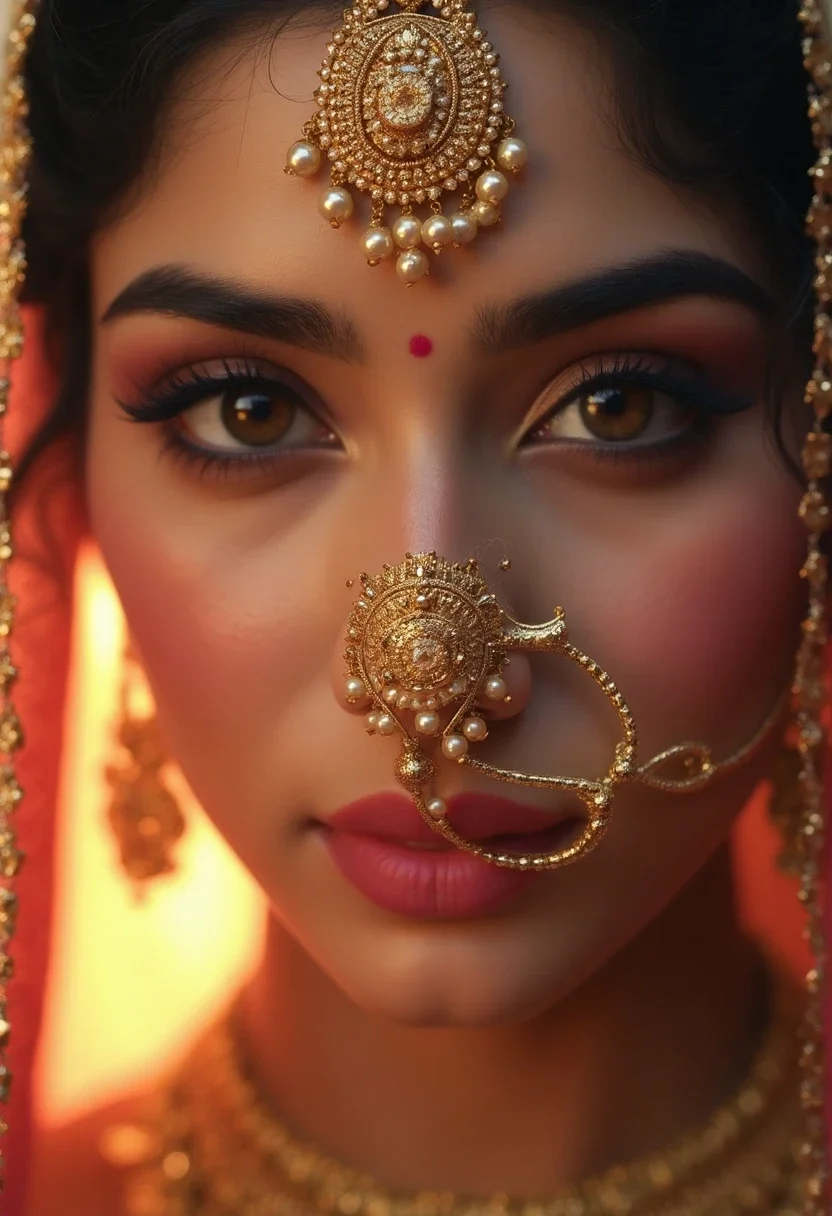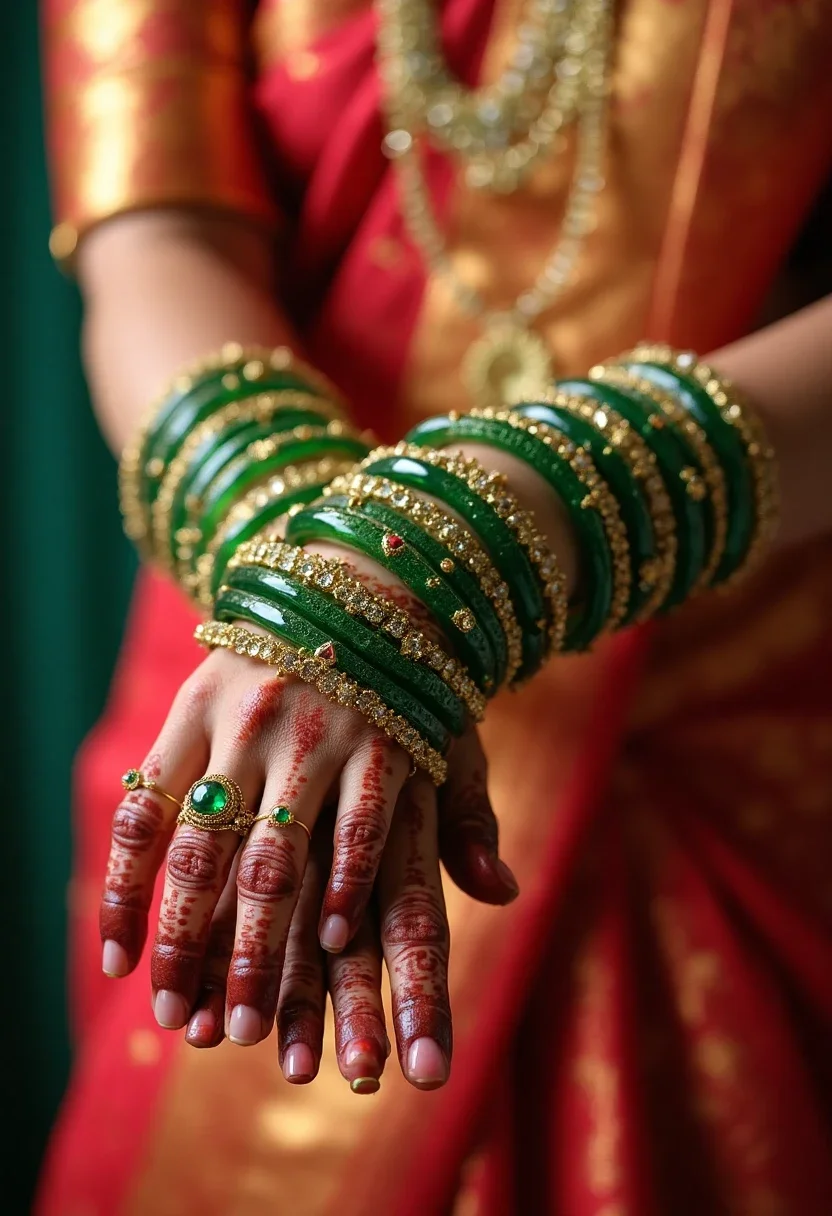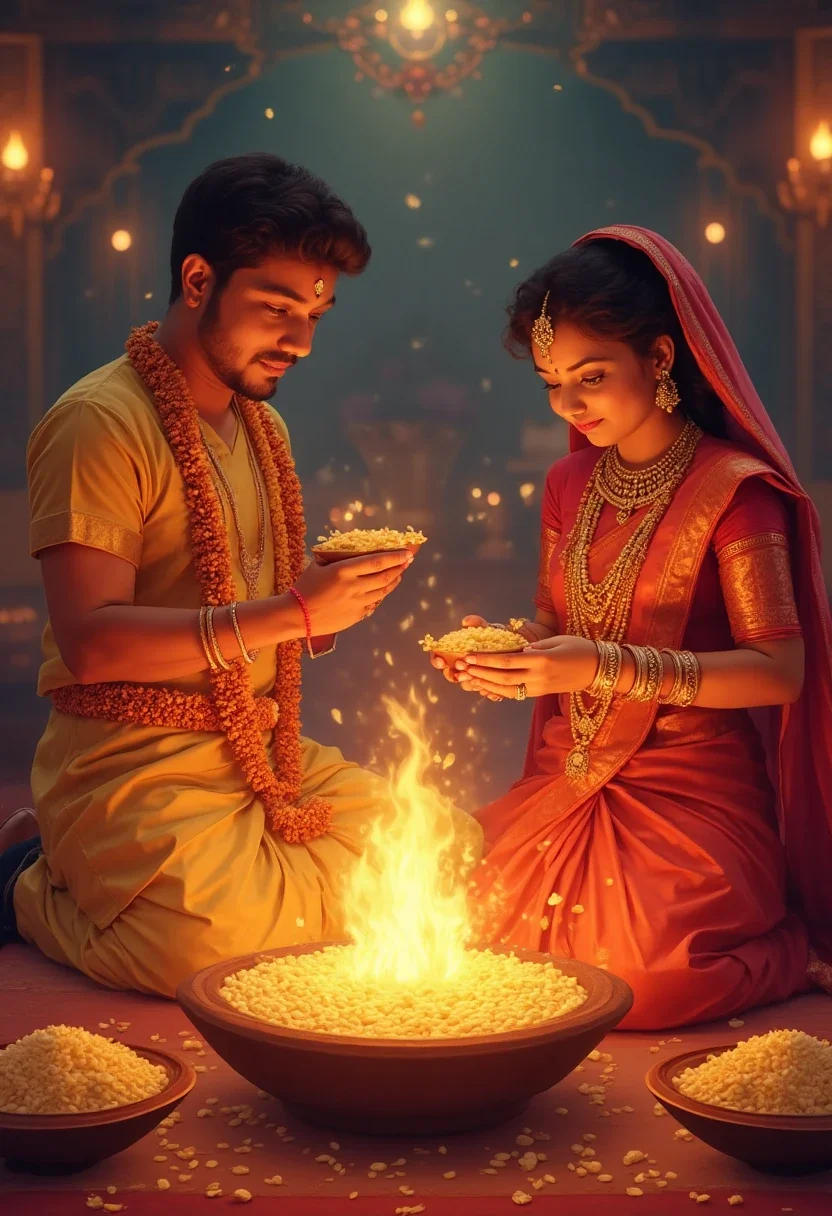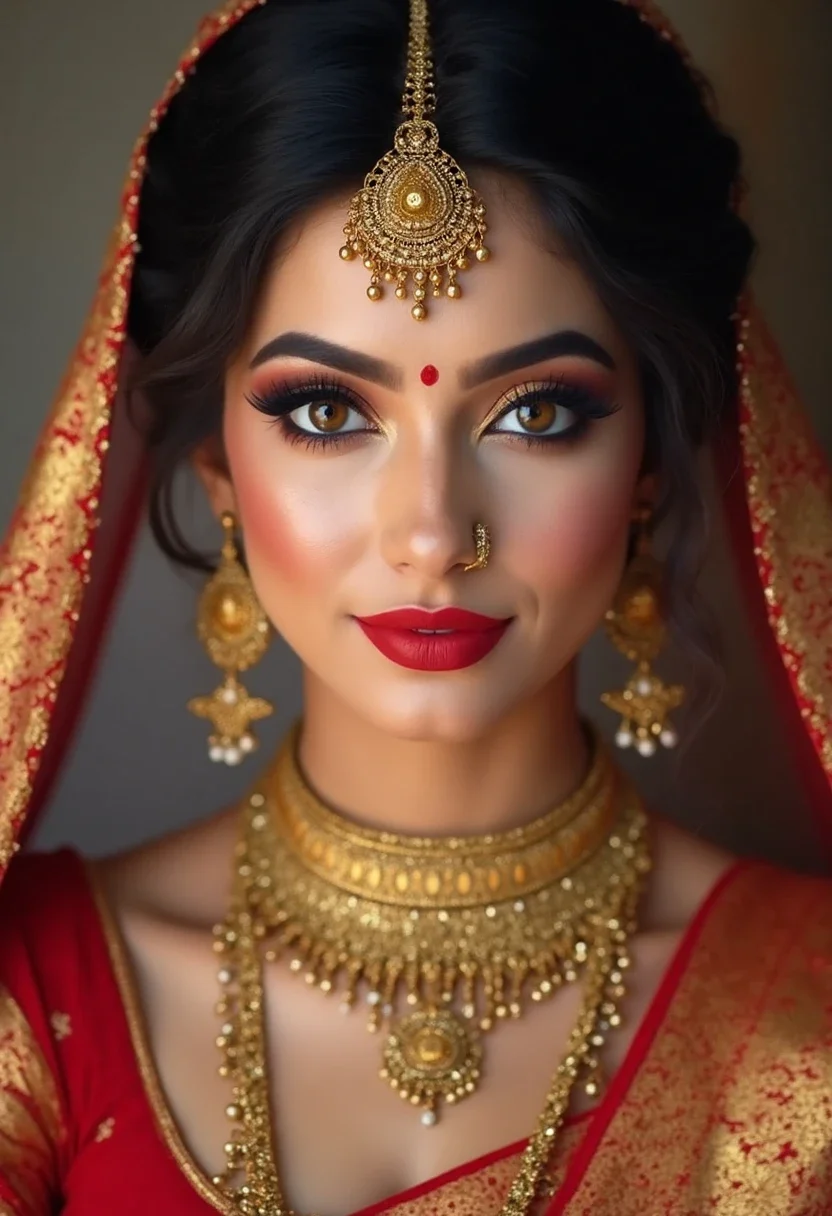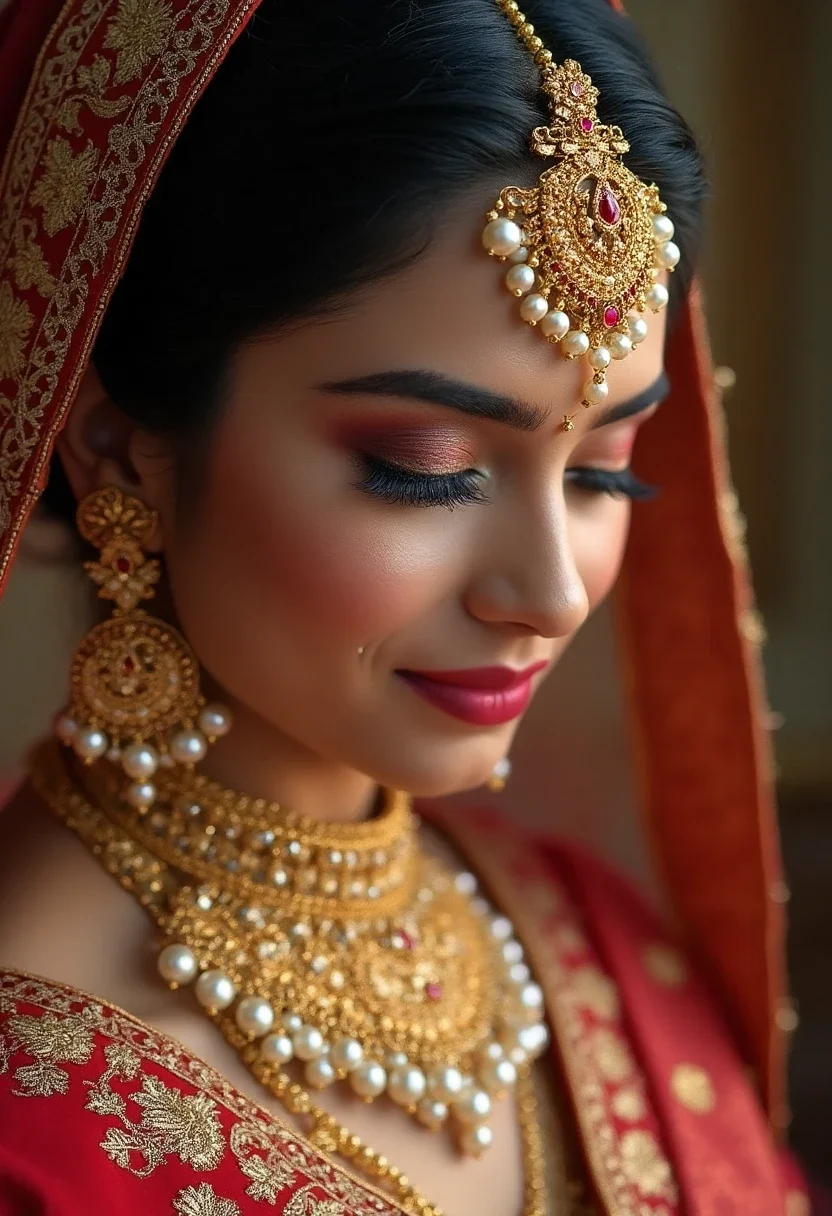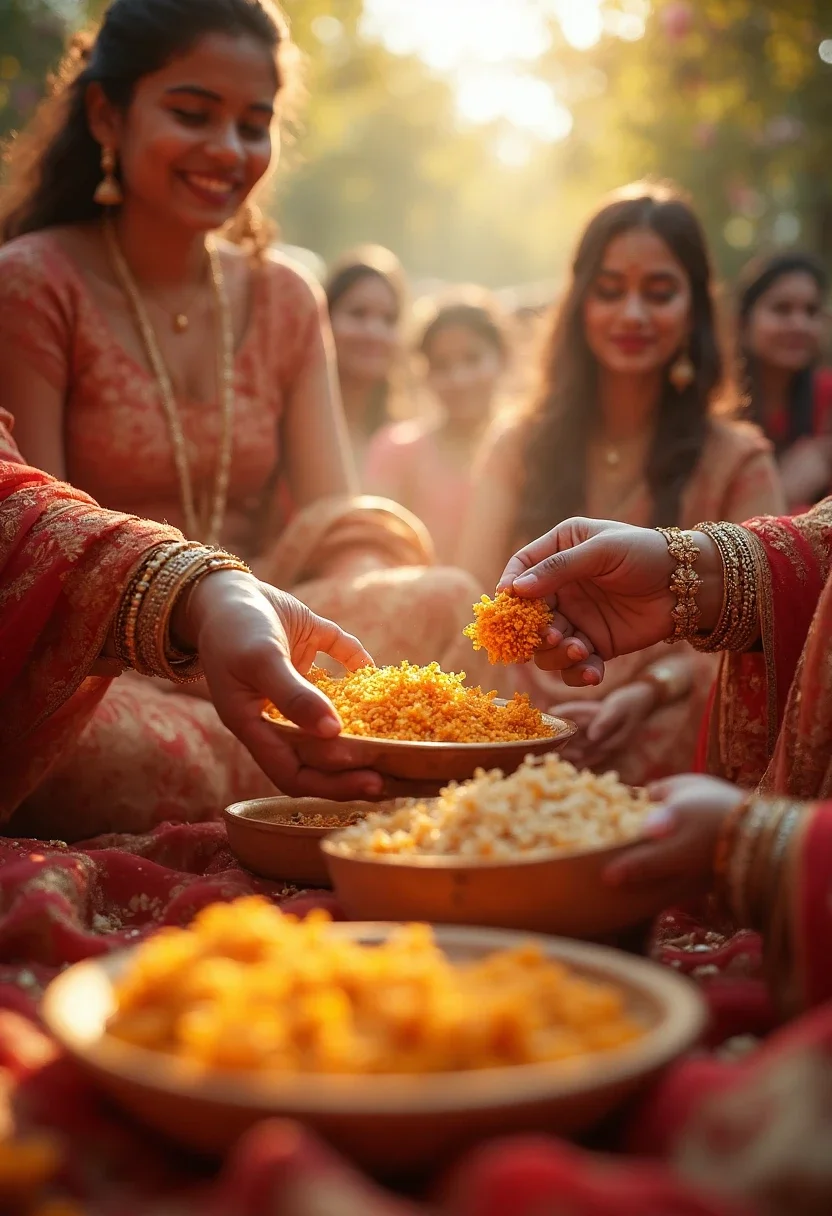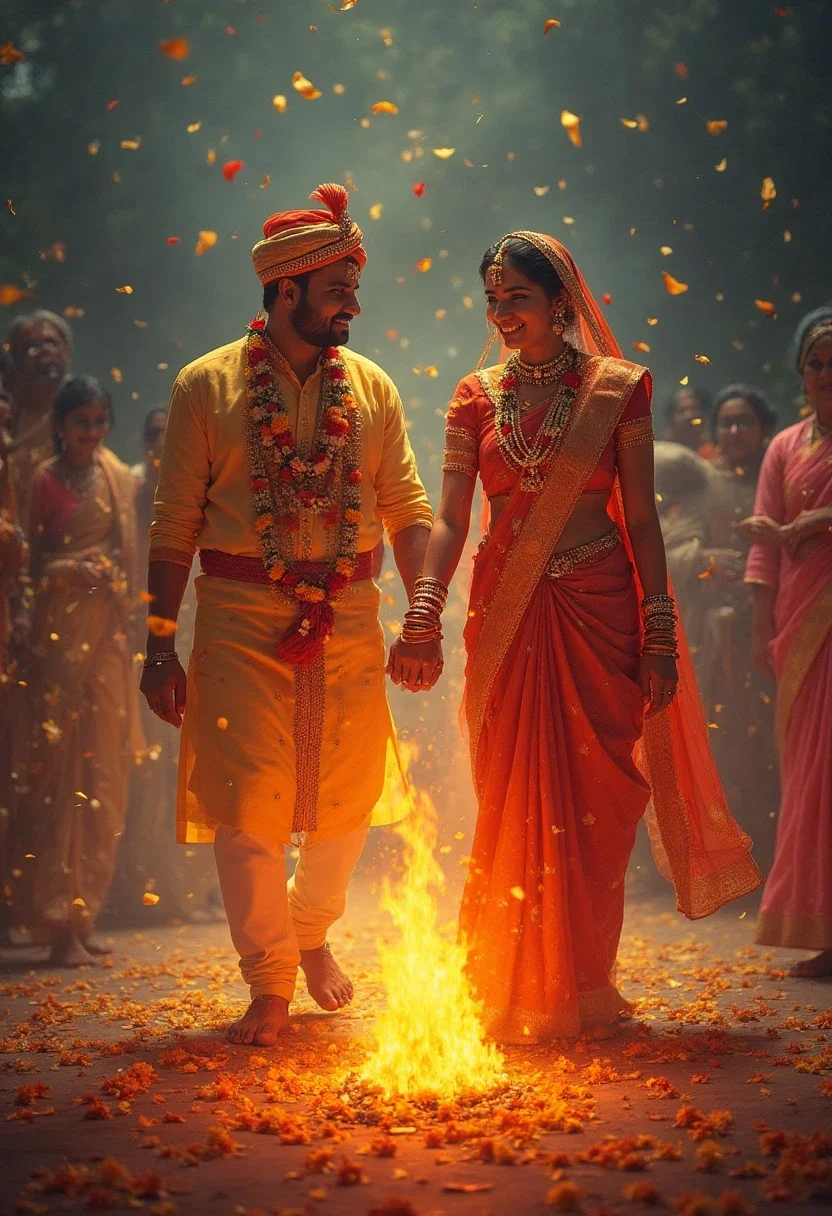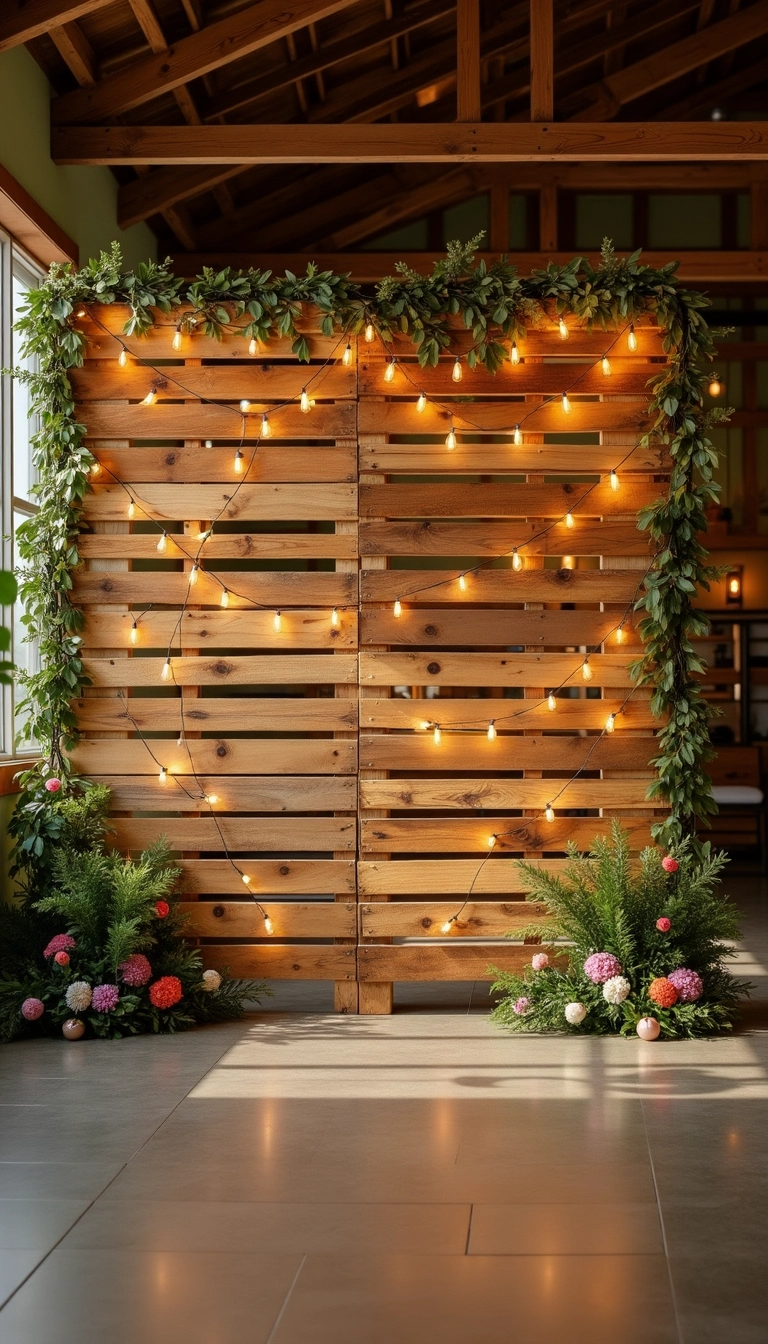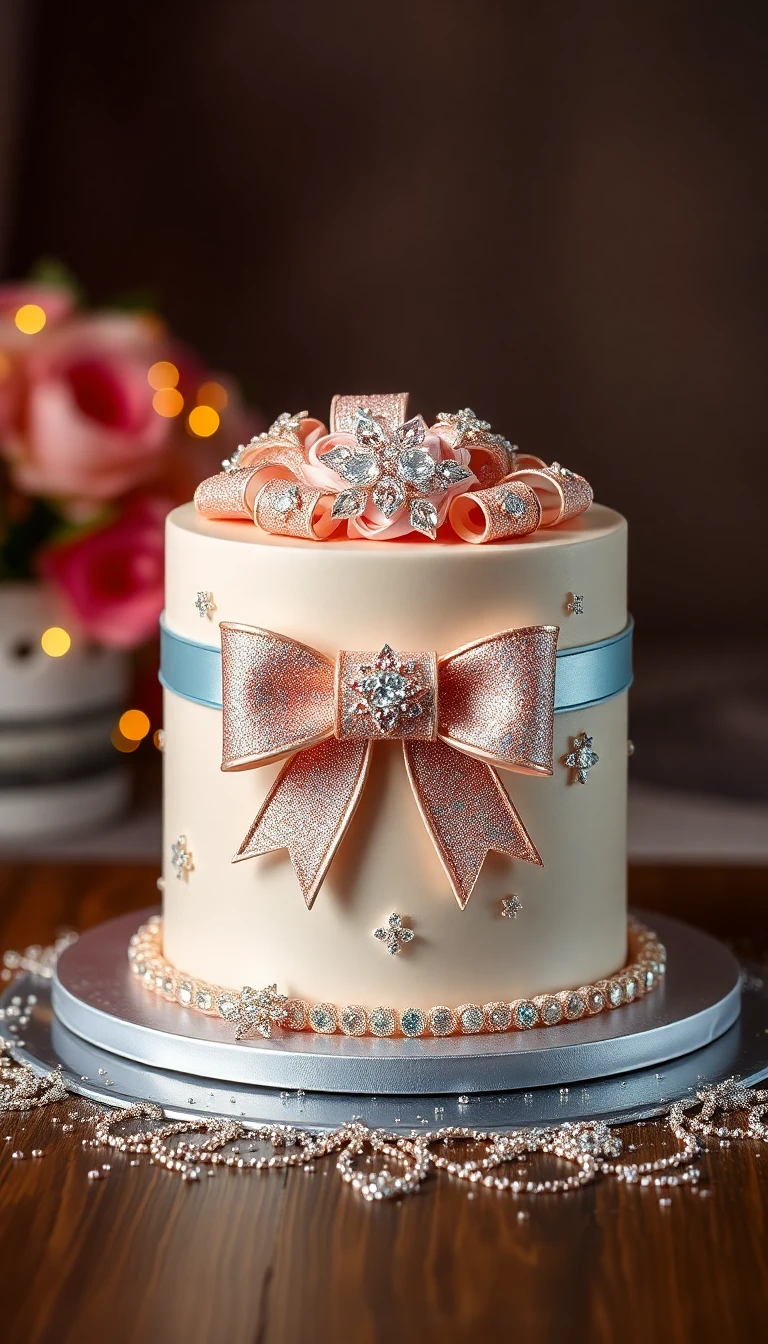10 Exquisite Traditions of a Maharashtrian Bride That Will Captivate Your Heart
The Maharashtrian bride is a vision of grace, tradition, and vibrant beauty. Rich in cultural heritage, her wedding is a celebration that merges age-old customs with the modern-day elegance of Indian bridal fashion. This article explores ten enchanting traditions and elements that define a Maharashtrian bride, offering a glimpse into a world of vivid colors, intricate jewelry, and meaningful rituals. Join us as we uncover the allure of these timeless practices that make a Maharashtrian wedding truly unforgettable.
1. The Mesmerizing Mundavalya: A Symbol of Purity and Elegance
Mundavalya is a unique ornament worn by Maharashtrian brides, symbolizing purity and elegance. This delicate string of pearls or flowers is tied across the forehead, enhancing the bride’s facial features and embodying a sense of cultural pride. Traditionally, it is worn by both the bride and groom, signifying their readiness to enter into a sacred union. The ritual of tying the Mundavalya is deeply emotional, marking the transformation of the bride into a married woman. Its simplicity juxtaposed with profound meaning makes it a cherished part of the wedding attire.
2. Nauvari Saree: The Timeless Drape That Defines Maharashtrian Brides
The Nauvari saree is an iconic element of Maharashtrian bridal attire, known for its distinct draping style. This nine-yard saree is worn in a dhoti style, allowing for ease and elegance. Often crafted from rich silks with intricate borders, the Nauvari saree is a symbol of strength and grace. It is traditionally paired with a matching blouse and a shawl, known as ‘dupatta’. The vibrant colors and exquisite patterns of the saree reflect the cultural richness and the bride’s joyous spirit, making it a standout piece at any wedding.
3. Nath: The Elegant Nose Ring With a Deep Cultural Significance
The Nath, a traditional nose ring, holds a special place in Maharashtrian bridal jewelry. Crafted from gold and studded with pearls or gemstones, the Nath is more than an ornament; it is a symbol of marital bliss and prosperity. Each design varies by region, reflecting local craftsmanship and cultural nuances. The act of wearing the Nath is filled with anticipation and excitement, as it marks the bride’s transition into a new chapter of life. Its intricate design and cultural significance make it a cherished heirloom passed down through generations.
4. Green Glass Bangles: A Ritual of Prosperity and Joy
Green glass bangles are an essential part of Maharashtrian bridal attire, symbolizing prosperity and joy. These bangles, worn in multiples, are believed to bring good fortune and happiness to the bride’s new life. The vibrant green color represents fertility and auspiciousness, making it a staple in pre-wedding ceremonies. The sound of the bangles clinking together is considered a melody of blessings, creating an atmosphere of celebration. This tradition is deeply rooted in culture, with each bangle adding to the bride’s radiant and festive appearance.
5. Lajhya Hom: The Sacred Fire Ceremony That Binds Two Souls
Lajhya Hom is a sacred fire ceremony central to Maharashtrian weddings, symbolizing the union of two souls. During this ritual, the bride and groom offer puffed rice into the sacred fire, seeking blessings for a harmonious and prosperous married life. The fire is considered a divine witness to their vows, purifying their intentions and strengthening their bond. This solemn event is marked by chants and prayers, creating a spiritual ambiance. Lajhya Hom is a profound expression of commitment and devotion, enveloped in the warmth of tradition.
6. Traditional Maharashtrian Bridal Makeup: Subtle Yet Striking
Maharashtrian bridal makeup is renowned for its subtle yet striking appeal, enhancing the bride’s natural beauty. The focus is on a flawless complexion with a hint of traditional charm. Kohl-lined eyes, a soft blush, and a bold lip color are quintessential elements. The makeup is complemented with a ‘bindi’ on the forehead and ‘kumarika’ (vermillion) at the hair parting. This elegant and understated approach to makeup underscores the bride’s features while respecting cultural aesthetics, making her shine on her special day.
7. The Importance of Halad Chadavane: A Joyous Pre-Wedding Ritual
Halad Chadavane is a joyful pre-wedding ritual in Maharashtrian culture, where turmeric paste is applied to the bride’s skin. This ceremony is believed to purify and bless the bride, preparing her for the upcoming wedding. Turmeric, known for its auspicious and beautifying properties, symbolizes prosperity and good fortune. Friends and family gather to celebrate, singing traditional songs and showering the bride with love and blessings. The vibrant yellow of the turmeric contrasts with the bride’s radiant smile, creating a joyful and memorable event.
8. The Lavish Peshwai Jewelry: An Ode to Maratha Royalty
Peshwai jewelry is a lavish addition to the Maharashtrian bride’s ensemble, inspired by the grandeur of Maratha royalty. Featuring intricate gold designs, studded with pearls and precious stones, this jewelry set includes necklaces, earrings, and armlets. Each piece is a masterpiece of craftsmanship, reflecting the regal heritage and cultural richness of Maharashtra. The bride adorned in Peshwai jewelry exudes a royal aura, making her wedding day appearance both majestic and memorable.
9. The Auspicious Sakhar Puda: A Sweet Beginning to Marital Bliss
Sakhar Puda is an auspicious pre-wedding ritual in Maharashtrian culture, symbolizing a sweet beginning to marital bliss. During this ceremony, sugar packets or gifts are exchanged between the bride and groom’s families, signifying acceptance and joy. This event marks the formal engagement and is a joyous occasion filled with laughter and anticipation. The exchange of Sakhar Puda is an expression of goodwill and unity, laying the foundation for a harmonious relationship between the two families.
10. Antarang Phera: The Concluding Ritual That Seals the Union
Antarang Phera is the concluding ritual in a Maharashtrian wedding, sealing the union between the bride and groom. This ceremony involves the couple taking seven sacred rounds around the holy fire, each representing a promise for a fulfilling married life. The phera signifies eternal love, commitment, and mutual respect. As the couple completes the ritual, they are showered with blessings and flower petals, marking the beginning of their journey together. This beautiful conclusion to the wedding ceremony is a testament to the couple’s dedication and the cultural richness of their union.
The journey of a Maharashtrian bride is a tapestry of vibrant customs, heartfelt rituals, and timeless elegance. From the enchanting Mundavalya to the sacred Antarang Phera, each tradition holds a special place in her heart, weaving a story of love and cultural heritage. These ten exquisite traditions not only define the bride’s wedding day but also offer a glimpse into a rich cultural legacy that continues to inspire and captivate. As these customs are passed down through generations, they remain a beautiful expression of the enduring values and joyous spirit of Maharashtrian weddings.

